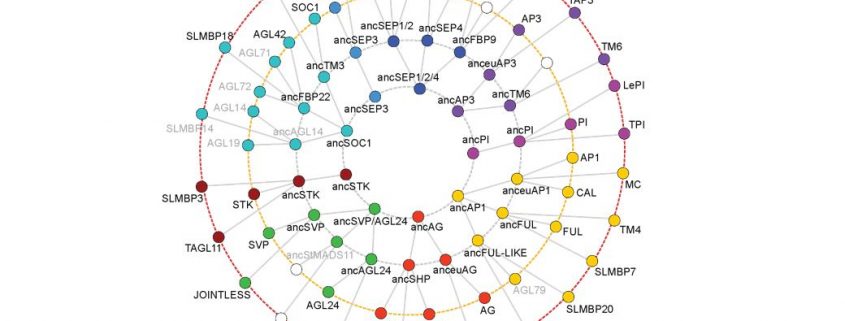The Innovation Potential of Ancient Whole Genome Duplication
Zhang et al. find that ancient genome triplication at the origin of core eudicots generated many new regulatory protein complexes, innovating plant development. Plant Cell https://doi.org/10.1105/tpc.18.00409
By Koen Geuten and Heleen Coenen
Background: The complete DNA (the genome) of many plants is sometimes duplicated or even triplicated. While whole-genome duplication often leads to an evolutionary dead end, when a new species group originates from such an event, the duplicated genome may provide a selective advantage in evolution. An example of a group that probably originated through whole-genome duplication is the core eudicots, which include the majority of flowering plants. Because of its importance, this ancient event was given a specific name, the gamma event.
Question: While we previously showed that the core eudicots originated from the gamma event, it is not known how the duplicated genome contributed to the success of this group. Why is it that in some cases duplicated genes can determine evolutionary success? In fact, usually one copy is quickly lost again. To answer this, we studied how MADS box genes, which control how a plant develops, were affected by the gamma event.
Findings: Using statistical methods that estimate what proteins looked like millions of years ago in combination with gene synthesis, ancient proteins can be “resurrected.” By resurrecting ancient MADS domain proteins before and after the gamma event, we found that this event had a dramatic influence on how these proteins work together. Because their interactions changed, their functions changed; therefore, the plants deriving from the gamma event had a different toolbox to develop. So, our study illustrates how ancient whole-genome duplications can innovate in evolution.
Next steps: Although we describe specifically how the toolbox changed, we did not examine the direct consequences of these changes for the plant’s development. Doing this could reveal the concrete steps evolution took after whole-genome duplication.
Zhicheng Zhang, Heleen Coenen, Philip Ruelens, Rashmi R. Hazarika, Tareq Al Hindi, Georgianna K. Oguis, Anja Vandeperre, Vera van Noort, Koen Geuten (2018). Resurrected Protein Interaction Networks Reveal the Innovation Potential of Ancient Whole-Genome Duplication. Plant Cell 30: 2741-2760; DOI: https://doi.org/10.1105/tpc.18.00409
Key words: Genome duplication, ancestral proteins, innovation, evolution




